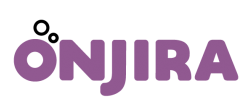Dual diagnosis describes when someone is facing both a mental health disorder and a substance use disorder at the same time. These co-occurring conditions can deepen each other’s effects, making recovery more complex if both aren’t addressed together.
Why Dual Diagnosis Demands Integrated Treatment
When mental health issues—such as depression, anxiety, PTSD, bipolar disorder—coexist with addiction, treating only one side often allows the other to undermine progress. Integrated care, which treats both mental illness and substance misuse, tends to lead to more sustainable recovery and fewer relapses.
Common Patterns in Dual Diagnosis
Some of the connections that often arise include:
- Mental illness leading to self-medication with alcohol or drugs
- Substance abuse triggering or worsening psychiatric symptoms
- Shared risk factors like genetics, trauma, stress, or environmental pressures
Because many symptoms overlap (for example, difficulty concentrating, mood swings, or sleeping problems), identifying dual diagnosis early is very important.
Signs That Suggest Both Issues Are Present
Some red flags indicating a dual diagnosis situation include:
- Persistent substance use despite negative consequences at home, work, or socially
- Worsening mental health symptoms when sober, or increased substance use with worsening mental health
- A pattern of treatment for one disorder over and over, without making progress
How Effective Dual Diagnosis Treatment Operates
Treatment programs that successfully address dual diagnosis typically include:
- Thorough Assessment
Professionals evaluate both psychiatric conditions and substance dependencies to build a complete clinical picture. - Medication Management
If needed, psychiatric medications are used alongside therapies for substance use disorders. - Therapeutic Approaches
Evidence-based therapies like Cognitive Behavioral Therapy (CBT), Dialectical Behavior Therapy (DBT), trauma-focused therapies, group therapy, and others that focus on coping skills, emotion regulation, relapse prevention. - Structured Care Levels
Residential treatment, partial hospitalization, intensive outpatient programs, outpatient aftercare—depending on severity and personal needs.
What Recovery Looks Like Day to Day
A person entering dual diagnosis rehab can expect:
- An initial detox-phase if substance dependency requires it
- Round-the-clock medical support during detox, if applicable
- Regular individual therapy plus group sessions that target both addiction and mental health
- Ongoing monitoring of progress in both domains, with adjustments to the treatment plan as needed
Why Location and Specialized Programs Matter
If you’re considering help in Texas, especially the Dallas area, choosing the right facility is crucial. A program labeled as Dallas Drug Rehab will often emphasize drug dependency treatment, but look for ones that also handle co-occurring psychiatric issues.
Similarly, Dallas alcohol rehab programs can excel in treating alcohol dependence, but dual diagnosis capability should be part of the package if mental health conditions are present.
Steps to Begin Healing
If you or someone you care about might have a dual diagnosis:
- Reach out to a treatment center that offers dual diagnosis care and confirm they treat both substance use and mental disorders.
- Ask about what therapies they use, whether psychiatric care is in-house, and how the program handles relapse prevention.
- Check insurance coverage and financial options—good centers should help sort that out.
- After the intensive treatment phase, make sure there’s a plan for ongoing support—whether via outpatient therapy, support groups, or counseling.


